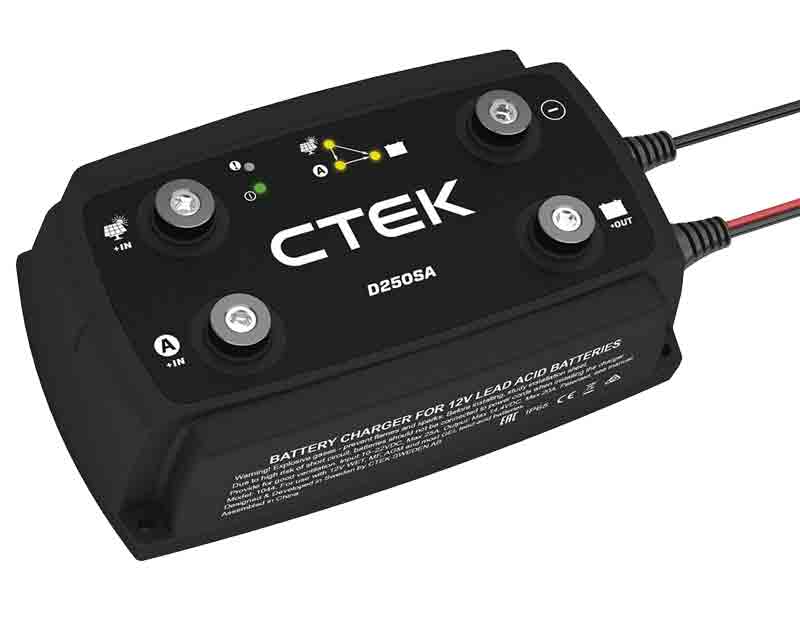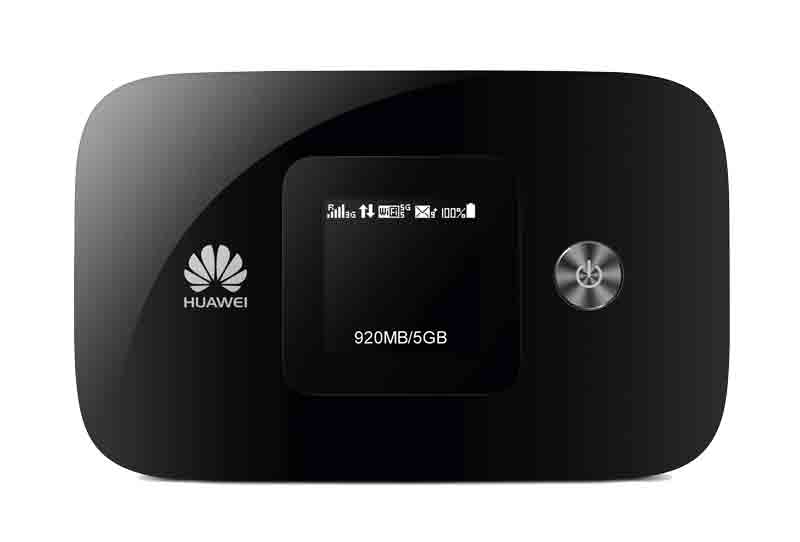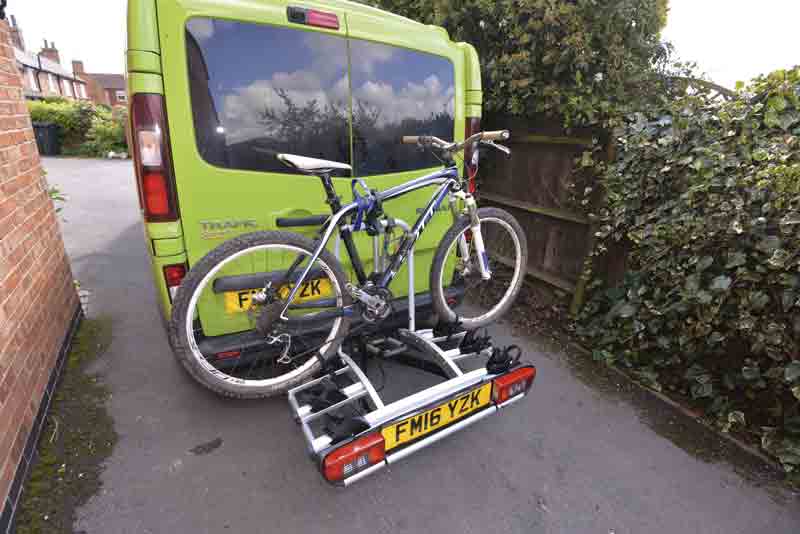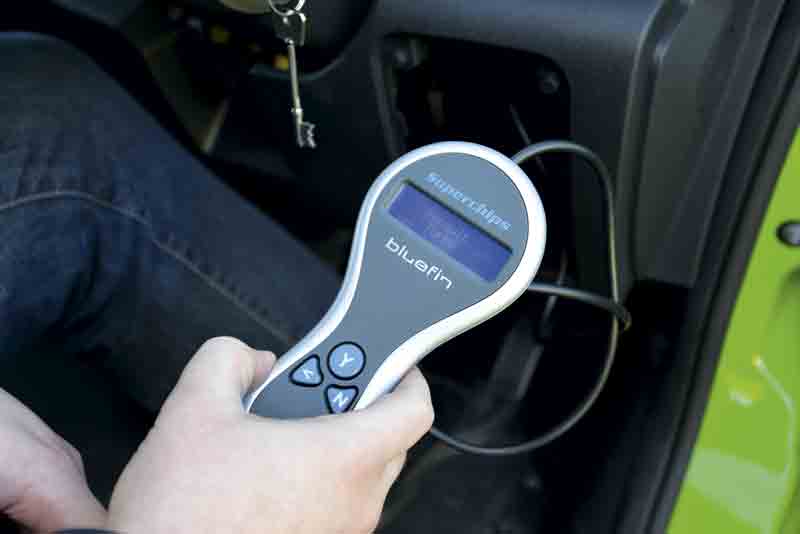Motorhome advice: Five of the best motorhome accessories
So – you’ve bought your dream motorhome, you’ve been away in it several times and are now considering adding some accessories to it that will enhance your motorhoming lifestyle.
What are the items we just can’t live without? It was tough whittling them down to just five key accessories but here they are…
A cassette awning for your motorhome
The reality is that, no matter where you venture in the UK and Europe, the weather will probably vary wildly. Who could have predicted last year’s scorching heatwave in the UK? And who knows what delights the weather will throw at us this year?
One product that will protect you from both searing UV rays and stair-rod downpours is an awning.

Many manufacturers offer them as an option, but they can be retro-fitted by most dealers and are available in a variety of styles and sizes to suit almost every model of campervan and motorhome.
The beauty of awnings for motorhomes is that they don’t impede on your storage space and easily wind out with either a manual handle - or the press of a button if you’ve opted for a fancy electric one.
You can also choose to attach side panels, with windows and door. Awnings are like people magnets on campsites and a welcoming place to sit and watch the sun set while enjoying a glass of wine with friends.
Pros
- More convenient to use than a free-standing version
- Does not require any extra internal storage room
- Offers UV protection as well as shelter from the rain
- Great for drying clothes or outdoor gear that has got wet
- Forms a social outdoor space
Cons
- Cost – convenience and quality doesn’t come cheap
- Storm straps are essential and you will need to retract it in high winds
- Check you have sufficient payload – some can weigh over 40kg
Battery to battery charger
A box of electronic components doesn’t sound like the most exciting purchase you can make but if you really want to be able to roam with complete freedom – irrespective of the availability of a hook-up – you want one of these handy boxes.

Wild campers will find a battery-to-battery charger is one of the best investments they’ll ever make.
Back in the day, motorhomes had one tiny leisure battery and an equally tiny mains charger. Lighting was often powered by the mains supply and 12V items were limited. In these traditional charging set-ups, when the engine is on, the starter battery gets charged and then any excess charge trickles into the leisure battery. The key word here is ‘trickles’.
Today, almost every aspect of a motorhome uses 12V power – from the fridge to the TV and even the loo flush – and so running out of 12V juice can become a major issue.
Most motorhomes come with some form of split-charging system, but this typically is a rudimentary system with a relay and parcel string-sized wiring that can’t really supply massive amounts of current to your leisure batteries.
So why does this matter? Well, if you’ve added a second leisure battery (which should be your first purchase if you wish to ever do without a hook-up), you’ll find a traditional split-charging system will take many hours of driving to top up your leisure batteries to their full capacity.
If you only have a short drive between overnight stops, your battery capacity may not last as long as you expect it to.
Pros
- Maximises the charging current to the leisure batteries when the engine is running
- Ideal for touring, especially if you prefer to wild camp
- Can send current to the leisure batteries day or night with the engine on
- Recharge leisure batteries as fast (or faster) than a mains charger
Cons
- Cost of having fitting
- Electronic box takes up some storage space
4G Mifi Device
This might sound like something hi-tech and complicated that only people with fingers glued to a Playstation (or Xbox) can master, but these handy little electronic devices can help you stay connected in far more places than a smartphone.

The device contains all you need to create a mobile WiFi hotspot in your motorhome and can be either used as a free-standing device or linked to an aerial system for an even stronger signal (look at companies like motorhomewifi.com for the latest available kit).
With so many aspects of our lives connecting on the internet – from emailing relatives to searching for great campsites and holiday destinations – it’s great to be able to stay in touch and online. Even if you’re the sort of person who savours getting away from it all, it’s still reassuring to know you can always contact people.
You can also use them to stream music or even a film, which can be a real bonus on a cold dark night.
Pros
- Able to get a stronger 3G/4G signal than a smartphone
- Allows you to get internet/email in more places
- Can be used to stream films
Cons
- Cost of the unit and data charges
- Needs a separate SIM card
A towbar for your motorhome
Even if you do not want to tow anything, a towbar is still very useful. Don’t think of it as a device just to haul a trailer with a car or motorbike on behind your motorhome, but as a universal attachment point – it’s a bit like the mechanical equivalent of a USB socket.

Towbars are ideal for bike racks in particular as they allow the racks to be mounted much lower down than most traditional bodywork-mounted bike racks.
More expensive, higher-quality bike racks can even swing or slide out of the way, allowing you to access the luggage space in the rear of a panel van conversion.
You can typically carry anything from 75kg to 120kg (look for the maximum ‘noseweight’ on the hitch), which is generally a higher weight limit than a bodywork-mounted bike rack. This opens up a realm of possibilities – a couple of e-bikes, a trio of regular bikes or even a scooter can be carried on one. We’ve even seen long canoes mounted vertically on custom racks.
If your motorhome was registered in the UK after 1 April 2012, you’ll need to fit a type-approved towbar.
MMM always recommends getting towbars professionally fitted as they’re not only back-breakingly heavy steel items but also because the modern CANBUS wiring systems used in most new vehicles is complicated and really not worth getting involved with yourself if you can help it.
Towbars are also useful in protecting the delicate rear panel and taillights of the motorhome, especially if you opt for one with a built-in rear bumper. Some people even use them for towing trailers...
Pros
- Allows you to carry bike racks, storage systems
- Helps protect the rear panel from damage
- If you have limited payload you can carry more in a box trailer
- You can tow larger toys, such as motorbikes or cars
Cons
- It’s a big chunk of metal that reduces your payload
- Need to budget for it to be professionally fitted
Remapping your motorhome
If your motorhome could do with a bit more oomph, you used to have two choices: a mechanical alteration (such as a wastegate adjustment to increase turbo boost pressure) or to trade your model in for a motorhome with a more powerful engine.

The trouble is we all get attached to our home-from-home and it can be a wrench to trade your beloved vehicle in just because you want a little more power to get up the hills. Of course, it’s never cheap to upgrade your motorhome.
The good news is that, provided you have an ECU-controlled turbo diesel (or a turbo-charged petrol engine), you don’t need to upgrade it to one with a more powerful engine, as you can simply remap it.
Many companies can reprogram the motorhome’s ECU by simply plugging into the diagnostic port and altering the original engine map (which can be returned to the stock map at any point if required).
The critical point to make with flash remapping is that it’s not a brand-new engine map that overwrites the original mapping code but it merely allows the vehicle to use more of the code that is already built into the ECU.
It moves the fence posts (the parameters the engine works within) to allow it to use more of the field (the available torque and power).
You do need to tell your insurance company if you have had your motorhome’s engine remapped, but it generally makes minimal or no difference to your premium.
Check with your vehicle maker about the warranty implications, though – some remapping firms offer drivetrain warranties as part of the package, some don’t.
Typically giving upwards of 20% more power and torque, remaps are not about top speed or 0-60mph times on motorhomes, rather they make the engine more effortless up hills and when overtaking or towing.
You may also see gains in economy as the engine can pull higher gears for longer, but this all depends on your driving style.
The real gains are in driving pleasure – a remap can transform a motorhome and make it far more relaxing and pleasurable to drive.
Pros
- Gives turbo diesel engines more pulling power
- Can save you having to drop a gear up hills
- Saves having to make mechanical alterations to boost power
- Can help improve economy
Cons
- Cost of system
- Can have an implication on original vehicle warranties
Pictures ©Warners Group Publications
Read more practical advice-based features every month in MMM magazine. To make sure you never miss an issue, take out a print subscription or buy and download digital versions.








Recent Updates
Engine management lights: all you need to know
What is the engine management light? What does it mean, and what do I have to do? ...
Motorhome air suspension: all you need to know
Motorhomes are heavy and the additional weight of equipment and height of the bodywork can increase the loads ...
Motorhome WiFi: how to get better motorhome internet
Staying connected on the move is more and more essential, so relying on campsite WiFi isn't an option – here ...
A class of their own - our guide to A-class motorhomes
Thinking of trading up to an A-class, or even going straight to the top of the motorhome tree? We guide you ...
Explore overseas on a motorhome dream tour
Enjoy exotic travel in a campervan or motorhome by hiring, swapping with someone else or exporting your ...
Motorhome water systems: everything you need to know
On-board water is an important part of every motorhome – here’s everything you need to know ...
Campervanning in Europe: what you need to know
Whether you're planning a leisurely drive through the French countryside, navigating bustling city streets in ...
Campervan security: all you need to know
With thefts on the increase, it’s important to know how to keep your campervan secure and prevent campervan ...
Campervan furniture: everything you need to know
Our campervan experts guide you through all the essentials for your campervan, including tables, chairs, ...
Campervan finance: how to fund your purchase
Here we look at the different types of campervan finance available, to help you decide what’s the best option ...
Other Articles
Britain’s best used motorhomes
Want a great motorhome without paying the premium for a new one? Here's a guide to the best you can get in the pre-owned market for each layout, ...
Which motorhome? Choosing the perfect motorhome for you
Choosing a motorhome or campervan is one of the biggest buying decisions you’ll ever make, so it's important ...
Campervan washroom essentials: stay fresh on the road
Our guide will take you through the campervan washroom essentials you'll need so you're well-prepared for ...
Dogs in campervans: all you need to know
Follow our advice and your dog will enjoy campervanning as much as you do ...
Electric campervans: all you need to know
Our guide will take you through everything you need to know about electric campervans and what the future ...
Motorhome electrics: a complete guide to your motorhome electrical set-up
Motorhome electrics can dramatically enhance the convenience and comfort of your vehicle – but they can be ...
Lighting for campervans: all you need to know
We guide you through all the lighting options available for you and your campervan, including interior ...
Electric bikes for motorhomes: our ultimate guide
Read our comprehensive guide to electric bikes for motorhome owners, helping you add electric power to your ...
Our guide to 'cheap' motorhomes in 2024
If you're on the hunt for an affordable new motorhome, this is the best place to start – we've rounded up a ...
Campervans in winter: all you need to know
Here's your guide to preparing your campervan for the colder months, whether you will be using it or putting ...